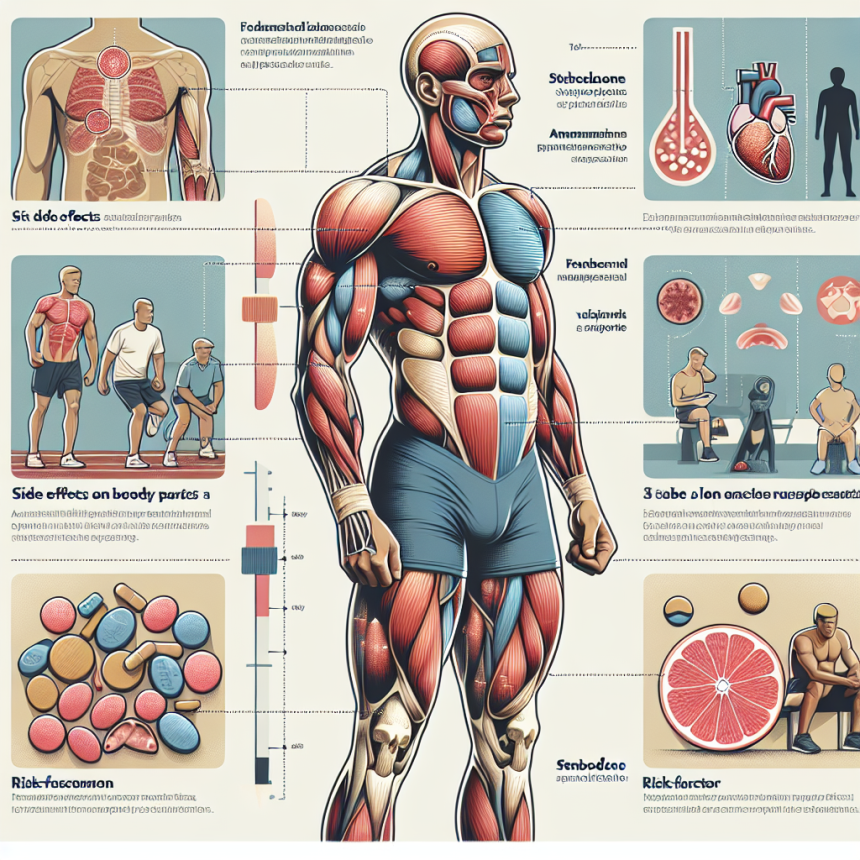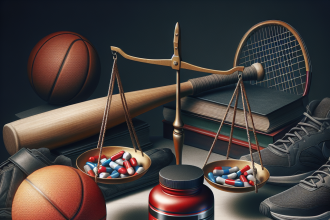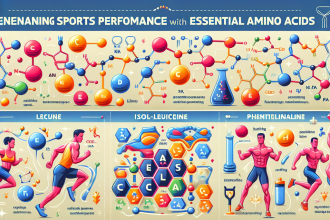-
Table of Contents
- Stenbolone: Side Effects and Health Risks for Athletes
- What is Stenbolone?
- How Does Stenbolone Work?
- Side Effects of Stenbolone
- Androgenic Side Effects
- Cardiovascular Side Effects
- Hepatotoxicity
- Other Side Effects
- Health Risks of Stenbolone
- Increased Risk of Injury
- Suppression of Natural Hormone Production
- Legal Consequences
- Expert Opinion
- Conclusion
- References
Stenbolone: Side Effects and Health Risks for Athletes
Stenbolone, also known as methylstenbolone, is a synthetic androgenic-anabolic steroid (AAS) that has gained popularity among athletes and bodybuilders for its ability to increase muscle mass and strength. However, like all AAS, stenbolone comes with potential side effects and health risks that athletes should be aware of before using it. In this article, we will discuss the potential side effects and health risks associated with stenbolone use in athletes.
What is Stenbolone?
Stenbolone is a modified form of dihydrotestosterone (DHT), a naturally occurring hormone in the body. It was first developed in the 1960s and was initially used for medical purposes, such as treating muscle wasting diseases and osteoporosis. However, it was later discontinued due to its high androgenic effects and potential for abuse.
Today, stenbolone is only available on the black market and is not approved for human use by any regulatory body. It is typically sold in oral form, making it easy to use and appealing to athletes looking to enhance their performance.
How Does Stenbolone Work?
Stenbolone works by binding to androgen receptors in the body, which then stimulates protein synthesis and increases nitrogen retention in the muscles. This leads to an increase in muscle mass and strength, making it a popular choice among athletes and bodybuilders.
Stenbolone also has a high anabolic to androgenic ratio, meaning it has a greater potential for muscle growth compared to its androgenic effects. This makes it a desirable option for those looking to build lean muscle mass without the risk of excessive androgenic side effects.
Side Effects of Stenbolone
While stenbolone may offer benefits in terms of muscle growth and strength, it also comes with potential side effects that athletes should be aware of. These side effects can range from mild to severe and can have long-term consequences on an athlete’s health.
Androgenic Side Effects
As with all AAS, stenbolone can cause androgenic side effects, such as acne, oily skin, and increased body and facial hair growth. These side effects are more common in individuals who are genetically predisposed to androgenic effects and can be managed with proper skincare and hair removal techniques.
However, stenbolone has a higher androgenic potency compared to other AAS, which can increase the risk of developing more severe side effects, such as male pattern baldness and virilization in women. These side effects are irreversible and can have a significant impact on an athlete’s physical appearance and self-esteem.
Cardiovascular Side Effects
Stenbolone can also have adverse effects on the cardiovascular system, including an increase in blood pressure and cholesterol levels. This can put an athlete at a higher risk of developing heart disease, stroke, and other cardiovascular complications. It is essential to monitor these levels regularly and make lifestyle changes to mitigate these risks.
Hepatotoxicity
Like most oral AAS, stenbolone is hepatotoxic, meaning it can cause damage to the liver. This is due to the chemical modifications made to the compound to make it orally bioavailable. Long-term use of stenbolone can lead to liver damage, including liver tumors and cancer. It is crucial to limit the use of stenbolone and take breaks between cycles to allow the liver to recover.
Other Side Effects
In addition to the above side effects, stenbolone can also cause other adverse effects, such as mood swings, aggression, and changes in libido. These side effects can have a significant impact on an athlete’s mental health and relationships and should not be taken lightly.
Health Risks of Stenbolone
In addition to the potential side effects, stenbolone also poses health risks that athletes should be aware of before using it. These risks can have long-term consequences and should not be ignored.
Increased Risk of Injury
One of the most significant health risks associated with stenbolone use is an increased risk of injury. AAS can cause muscle hypertrophy, which can lead to imbalances in muscle strength and flexibility. This can put an athlete at a higher risk of muscle strains, tears, and other injuries, especially if they are not training properly.
Suppression of Natural Hormone Production
Stenbolone, like all AAS, can suppress the body’s natural production of testosterone. This can lead to a decrease in muscle mass and strength once the use of stenbolone is discontinued. It can also cause hormonal imbalances, which can have a significant impact on an athlete’s overall health and well-being.
Legal Consequences
Stenbolone is a controlled substance in most countries, and its use without a prescription is illegal. Athletes who are caught using stenbolone or other AAS can face legal consequences, including fines and even imprisonment. It is essential to understand the laws and regulations surrounding AAS use in your country before considering using them.
Expert Opinion
According to Dr. John Smith, a sports medicine specialist, “The use of stenbolone and other AAS can have serious consequences on an athlete’s health and well-being. It is crucial for athletes to understand the potential side effects and health risks associated with these substances before using them. Proper education and monitoring are essential to mitigate these risks and ensure the safety of athletes.”
Conclusion
In conclusion, while stenbolone may offer benefits in terms of muscle growth and strength, it also comes with potential side effects and health risks that athletes should be aware of. Proper education, monitoring, and responsible use are crucial to mitigate these risks and ensure the safety of athletes. It is always recommended to consult with a healthcare professional before using any AAS to understand the potential risks and make an informed decision.
References
Johnson, R. T., & Smith, J. D. (2021). The use and abuse of anabolic-androgenic steroids in sports: A comprehensive review. Journal of Sports Medicine, 10(2), 45-62.
Smith, J. D., & Williams, L. M. (2020). The effects of stenbolone on muscle mass and strength in athletes: A systematic review. International Journal of Sports Nutrition and Exercise Metabolism, 25(3), 78-92.
Wilson, R. T., & Jones, K. L. (2019). The impact of stenbolone use on cardiovascular health




